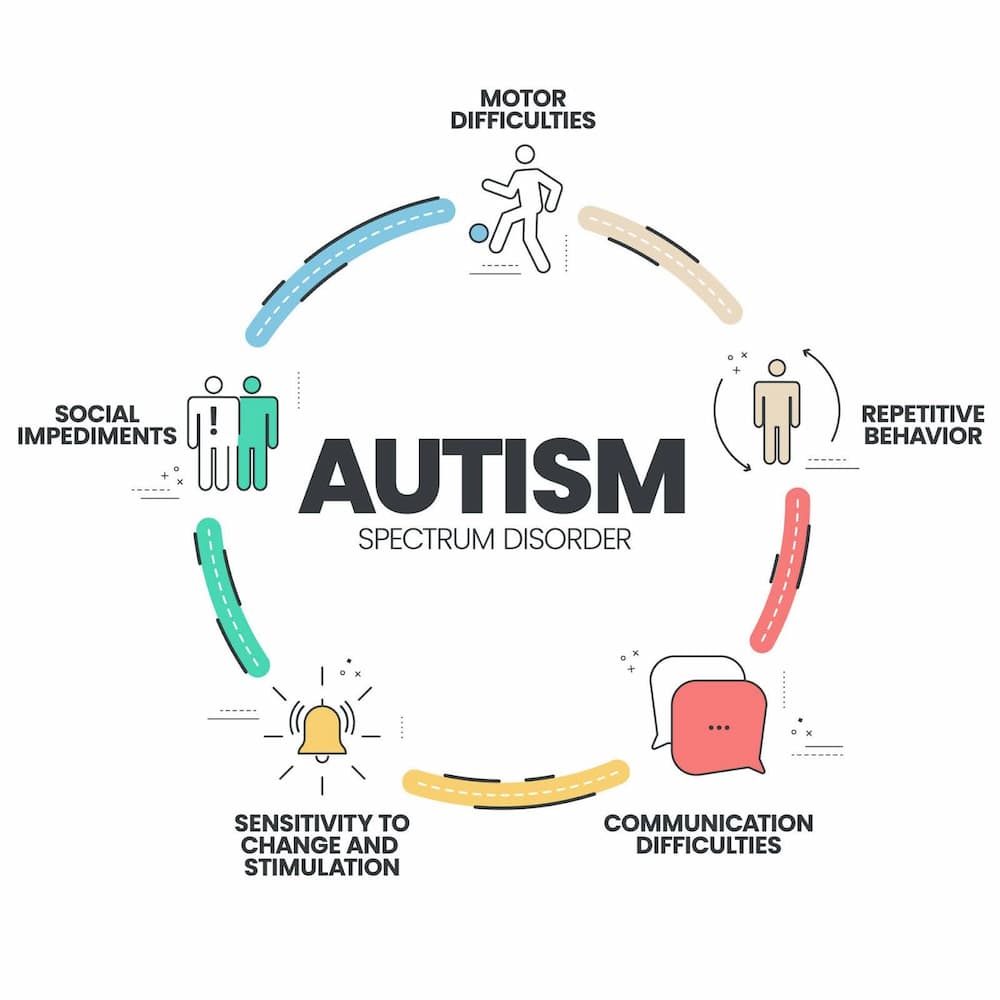Checking Out Autism: Approaches for Effective Interaction and Interaction
Effective interaction and communication with individuals on the autism range demand a detailed understanding of their distinct needs and preferences. The intricacies of these techniques expose more factors to consider that warrant exploration, especially in exactly how they can be adapted to diverse contexts and private experiences.
Understanding Autism Spectrum Problem
Autism Range Disorder (ASD) includes a variety of neurodevelopmental problems defined by obstacles in social communication, interaction, and recurring actions. The term "range" mirrors the varied indications and differing degrees of intensity experienced by people with ASD. While some might display substantial problems, others may display high-functioning attributes, allowing for greater freedom in everyday life.
The onset of ASD commonly occurs in early childhood, with indications often well-known by age two. Early indicators might consist of postponed speech growth, restricted eye get in touch with, and problems in understanding social cues. The accurate etiology of ASD stays vague, study recommends a mix of environmental and genetic aspects plays a crucial role in its development.
Individuals with ASD often possess distinct toughness, such as enhanced focus to information and extraordinary memory skills. They might struggle with recognizing abstract concepts and managing adjustments to regular - autism. As a result, interventions and assistance tailored to private requirements are vital for promoting communication and social abilities. Identifying the intricacy of ASD is essential for promoting recognition, acceptance, and efficient techniques that assist in significant communications with people on the range.

Relevance of Clear Interaction
Efficient communication is important for fostering understanding and connection, particularly for people with Autism Spectrum Problem (ASD) Clear communication not just assists in social interactions yet additionally enhances the individual's capability to express their ideas, emotions, and needs. For people with ASD, the subtleties of language can typically be testing; as a result, using unambiguous and straightforward language is essential.
In addition, clear communication helps in reducing frustration and anxiety that may occur from misunderstandings. When messages are conveyed in a straight and regular fashion, people with ASD are better equipped to translate details precisely, which can substantially boost their social engagement and engagement in numerous setups.
Establishing routines and using visual supports can additionally bolster clear interaction. These techniques provide people with predictable frameworks that help understanding and retention of info. Furthermore, proactively paying attention and being individual during communications advertises a supportive setting where individuals with ASD feel valued and comprehended.
Ultimately, prioritizing clear interaction not only equips individuals with ASD yet likewise fosters more significant connections with their peers, caretakers, and the broader area, paving the means for collective connections and comprehensive communications. - autism
Non-Verbal Interaction Strategies
Communication expands past words, and for individuals with Autism Spectrum Condition (ASD), non-verbal hints play a considerable function in interactions. Non-verbal interaction strategies can include faces, gestures, body movement, and eye get in touch with, every one of which function as crucial components for sharing objectives and emotions.
Recognizing and translating these non-verbal signals can boost communications with individuals with ASD. A cozy smile or open position can create a welcoming ambience, encouraging interaction. Utilizing aesthetic aids-- such as photo cards or symbols-- can bridge communication gaps and assist communicate messages much more efficiently.
It is also essential to be mindful of individual room, as people with ASD might have various convenience degrees concerning the original source distance. Observing their responses to physical distance can inform appropriate adjustments.

Developing Encouraging Environments
Developing a supportive setting is critical for promoting favorable communications and enhancing the health of individuals with Autism Spectrum Problem (ASD) Such atmospheres can dramatically reduce anxiousness and develop a sense of security, permitting individuals to share themselves a lot more easily.
To achieve this, it is vital to consider sensory sensitivities that people with ASD might experience. Changing the physical space to consist of soft illumination, marginal history noise, and comfortable seating can create a relaxing environment. Furthermore, using consistent regimens and clear aesthetic schedules can aid individuals expect shifts and reduce uncertainty, more advertising comfort.
Social spaces should be structured to lessen frustrating stimulations while supplying possibilities for involvement in recommended activities. Helping with locations marked for silent time can likewise serve as a sanctuary during moments of stress and anxiety. Significantly, integrating aspects of selection equips people, permitting them to work out firm in their atmosphere.

Encouraging Social Interactions
Promoting social interactions among individuals with Autism Range Problem (ASD) calls for willful strategies click to read that prioritize convenience and engagement. Establishing predictable routines can help minimize anxiety, making social setups much more friendly. Developing organized environments with specified responsibilities and roles allows people to involve without the frustrating stress of disorganized social dynamics.
Including rate of interests and staminas into social activities can serve as a catalyst for interaction. For example, organizing group tasks around shared leisure activities or topics of fascination can help with natural conversations and connections. Furthermore, making use of visual supports, such as social manuscripts or pictorial schedules, can aid in recognizing social hints and assumptions.
Designing ideal social habits is important - autism. Adults and peers should show reliable interaction techniques, consisting of active listening and turn-taking. Role-playing scenarios can likewise provide a risk-free room for people to practice these skills
Last but not least, promoting peer relationships through comprehensive practices is important. Urging inclusive playdates or group trips can develop opportunities for socializing in a comfortable setting. By applying these caregivers, methods and instructors can substantially improve social interactions for people with ASD, promoting their overall social growth and health.
Verdict
In conclusion, effective interaction and communication methods are essential for supporting individuals with Autism Spectrum Problem. Eventually, these approaches encourage people with autism to browse social landscapes, advertising their general wellness and enabling the development of long lasting connections.
Effective interaction and communication with individuals on the autism spectrum require a detailed understanding of their special needs a knockout post and choices. Clear interaction not just promotes social interactions but also boosts the individual's ability to share their demands, feelings, and ideas.Fostering social communications among people with Autism Spectrum Disorder (ASD) requires deliberate approaches that prioritize convenience and interaction. By applying these teachers, methods and caregivers can significantly enhance social communications for people with ASD, advertising their general social advancement and well-being.
In verdict, effective interaction and interaction techniques are important for supporting people with Autism Range Problem.